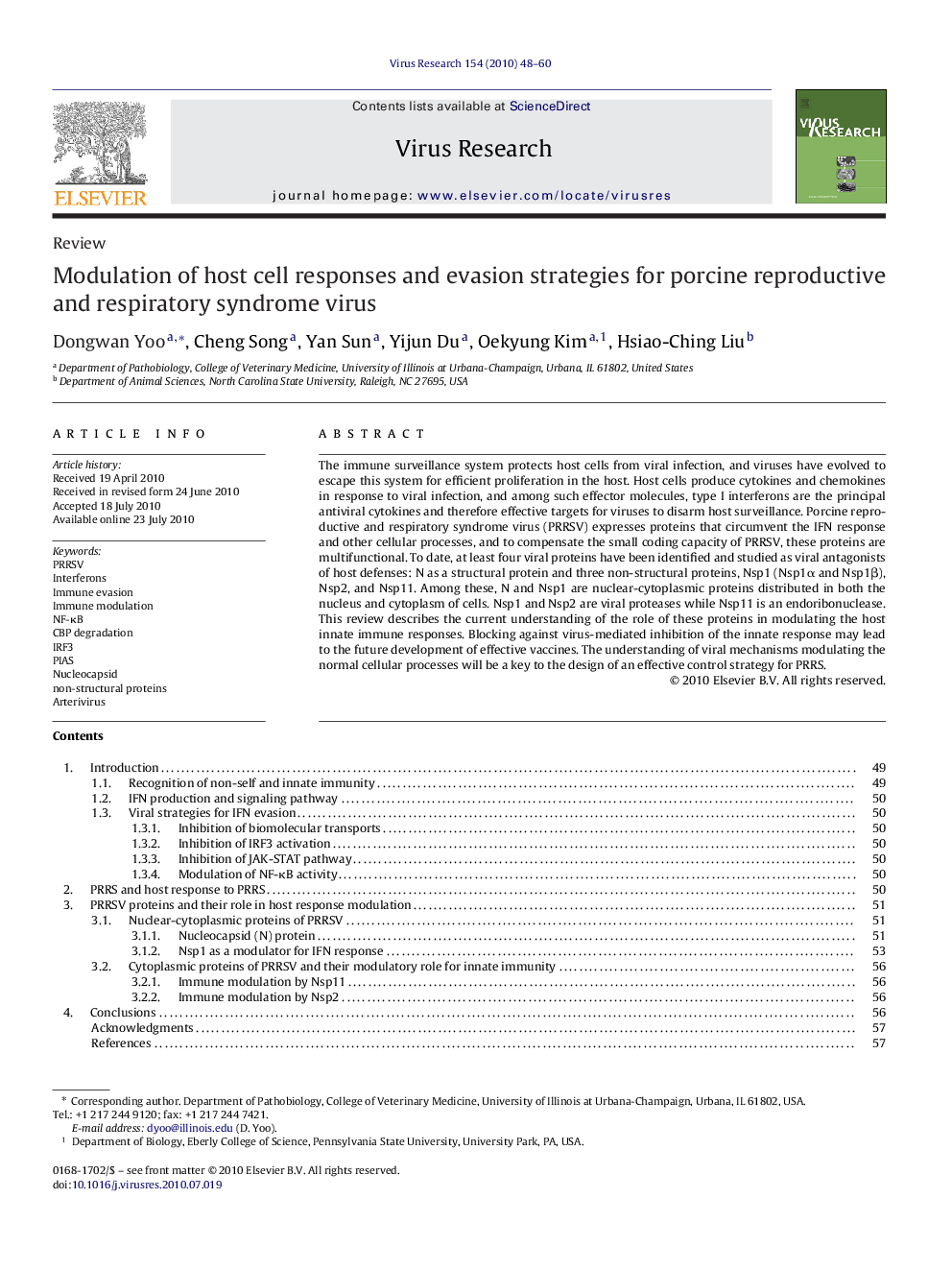| Article ID | Journal | Published Year | Pages | File Type |
|---|---|---|---|---|
| 3429117 | Virus Research | 2010 | 13 Pages |
The immune surveillance system protects host cells from viral infection, and viruses have evolved to escape this system for efficient proliferation in the host. Host cells produce cytokines and chemokines in response to viral infection, and among such effector molecules, type I interferons are the principal antiviral cytokines and therefore effective targets for viruses to disarm host surveillance. Porcine reproductive and respiratory syndrome virus (PRRSV) expresses proteins that circumvent the IFN response and other cellular processes, and to compensate the small coding capacity of PRRSV, these proteins are multifunctional. To date, at least four viral proteins have been identified and studied as viral antagonists of host defenses: N as a structural protein and three non-structural proteins, Nsp1 (Nsp1α and Nsp1β), Nsp2, and Nsp11. Among these, N and Nsp1 are nuclear-cytoplasmic proteins distributed in both the nucleus and cytoplasm of cells. Nsp1 and Nsp2 are viral proteases while Nsp11 is an endoribonuclease. This review describes the current understanding of the role of these proteins in modulating the host innate immune responses. Blocking against virus-mediated inhibition of the innate response may lead to the future development of effective vaccines. The understanding of viral mechanisms modulating the normal cellular processes will be a key to the design of an effective control strategy for PRRS.
